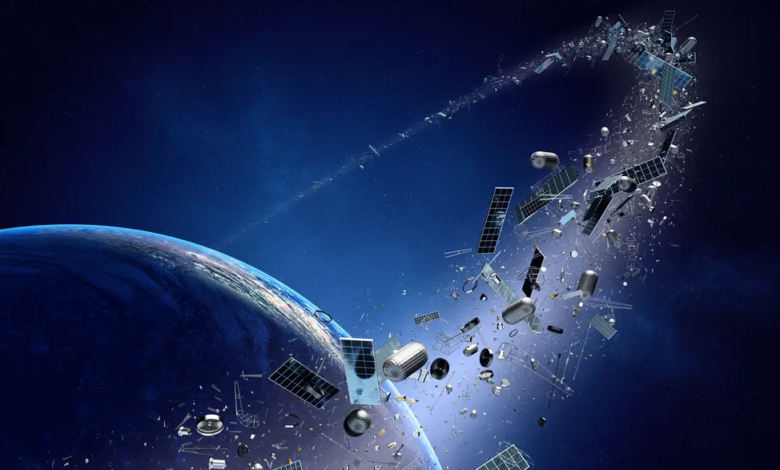With the circular economy space waste can also become resources
Circular economy of space waste
(sustainabilityenvironment.com) – Solving the problem of space waste from a circular perspective could be a solution not only for the safeguarding and security of future space missions but also for the recovery and exploitation of the resources dispersed in orbit around the Earth.
A study by the University of Southampton has developed a method of quantification for the value and mass of the waste fluctuating around the Planet, assuming to insert them in a circular cycle: Estimates tell us that they could yield between billions and trillions of dollars, and this – scientists say – makes their recovery convenient.
The results of the research were published in the journal Waste Management.
Recovering and valuing space waste
In January 2021, the US Space Surveillance Network recovered and reported 21,901 artificial objects on the Earth’s surface, of which almost 4,500 are still functioning. The mission, which also collected a large number of debris, looked only at objects large enough to be detected, but estimates state that the smallest space waste is many more; about 128 million pieces smaller than 1 cm, more than 900,000 those between 1 and 10 cm, about 34,000 those larger than 10 cm. Garbage orbits around our planet and threatens the security of space exploration and satellites due to the danger of impacts and compromises.
Read also Nanoracks’ new space waste disposal solutions
The University of Southampton has launched a study aimed at finding a safe, environmentally sustainable and, possibly, economically profitable solution: Professor of Applied Environmental Sciences Ian Williams and Doctor of Applied GIS and Remote Sensing Ryan Leonard estimated the mass value of space waste if it was placed in a circular resource recovery system, believing, as Williams explained, that “If the financial value of space debris recovery is quite high, the investment in technology to do so is justified”.
The calculated value seems to have met the expectations of the two scientists, who quantify the potential net revenues from the reuse of debris between 570 billion and 1.2 trillion dollars. The figures refer to the valorization of an amount that goes between 5,312 and 19,124 tons of mechanical scrap, potentially recoverable with the system of active removal of the debris (ADR)or – according to scholars – using the plasma propeller invented by Dr. Kinkwan Kim of the University of Southampton for the deorbit of satellites at the end of life.
According to Professor Williams: “The development of in-orbit services, such as the extension of the life of inactive satellites, or the advancement of ADR, will be crucial to solving the problem of orbital debris. But, with this, a future circular economy for space can be financially feasible, with potentially beneficial consequences for risk reduction; resource efficiency; high value-added employment; and knowledge of climate change, science, monitoring and early warning data”






